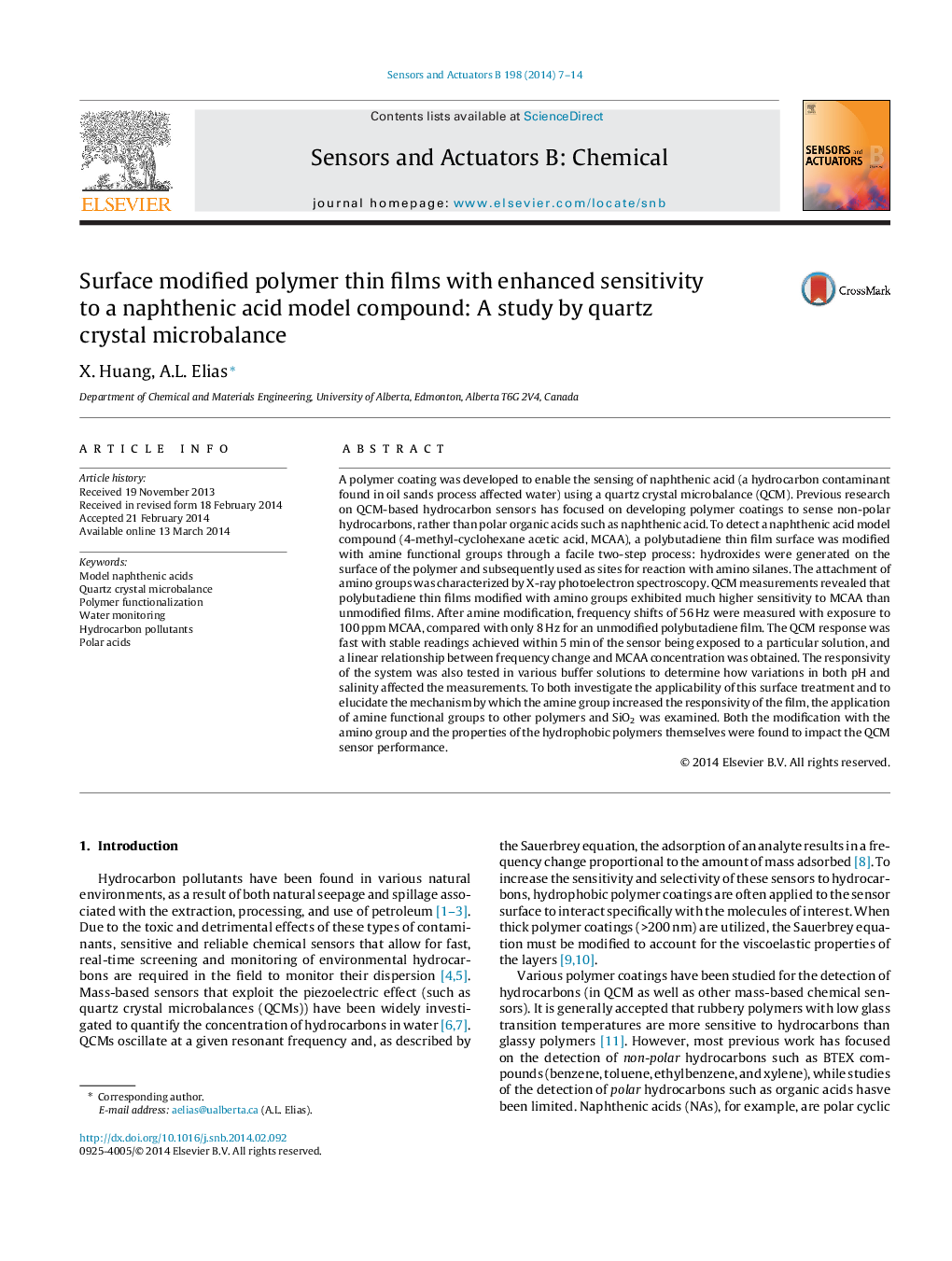| کد مقاله | کد نشریه | سال انتشار | مقاله انگلیسی | نسخه تمام متن |
|---|---|---|---|---|
| 742781 | 1462092 | 2014 | 8 صفحه PDF | دانلود رایگان |
• Mass-based sensors were developed to measure polar acid pollutants in water.
• Amine-terminated polymer coatings were developed to sense naphthenic acid.
• Measurements were conducted by quartz crystal microbalance (QCM).
• Modified films exhibited enhanced responsivity to a model compound at 0–100 ppm.
• The properties of the polymer layer were found to affect device performance.
A polymer coating was developed to enable the sensing of naphthenic acid (a hydrocarbon contaminant found in oil sands process affected water) using a quartz crystal microbalance (QCM). Previous research on QCM-based hydrocarbon sensors has focused on developing polymer coatings to sense non-polar hydrocarbons, rather than polar organic acids such as naphthenic acid. To detect a naphthenic acid model compound (4-methyl-cyclohexane acetic acid, MCAA), a polybutadiene thin film surface was modified with amine functional groups through a facile two-step process: hydroxides were generated on the surface of the polymer and subsequently used as sites for reaction with amino silanes. The attachment of amino groups was characterized by X-ray photoelectron spectroscopy. QCM measurements revealed that polybutadiene thin films modified with amino groups exhibited much higher sensitivity to MCAA than unmodified films. After amine modification, frequency shifts of 56 Hz were measured with exposure to 100 ppm MCAA, compared with only 8 Hz for an unmodified polybutadiene film. The QCM response was fast with stable readings achieved within 5 min of the sensor being exposed to a particular solution, and a linear relationship between frequency change and MCAA concentration was obtained. The responsivity of the system was also tested in various buffer solutions to determine how variations in both pH and salinity affected the measurements. To both investigate the applicability of this surface treatment and to elucidate the mechanism by which the amine group increased the responsivity of the film, the application of amine functional groups to other polymers and SiO2 was examined. Both the modification with the amino group and the properties of the hydrophobic polymers themselves were found to impact the QCM sensor performance.
Journal: Sensors and Actuators B: Chemical - Volume 198, 31 July 2014, Pages 7–14
